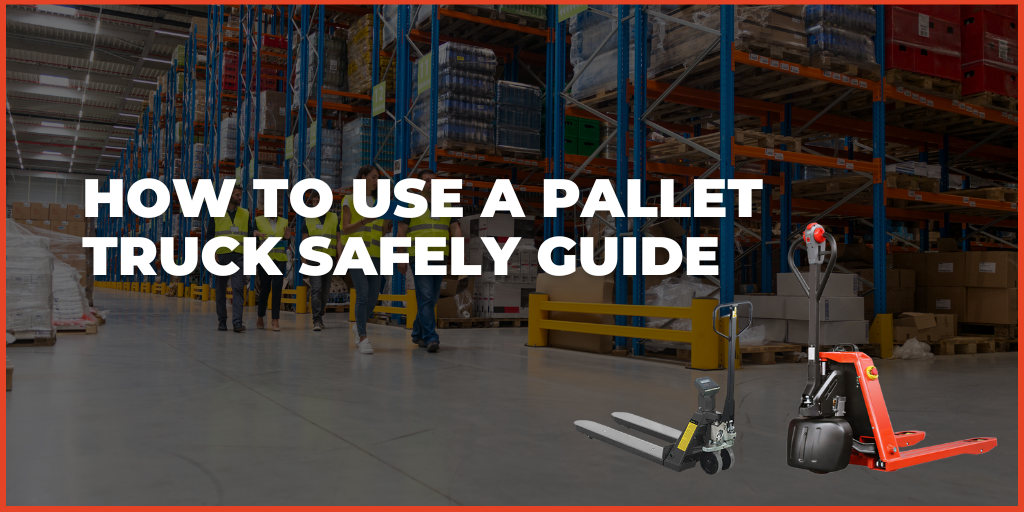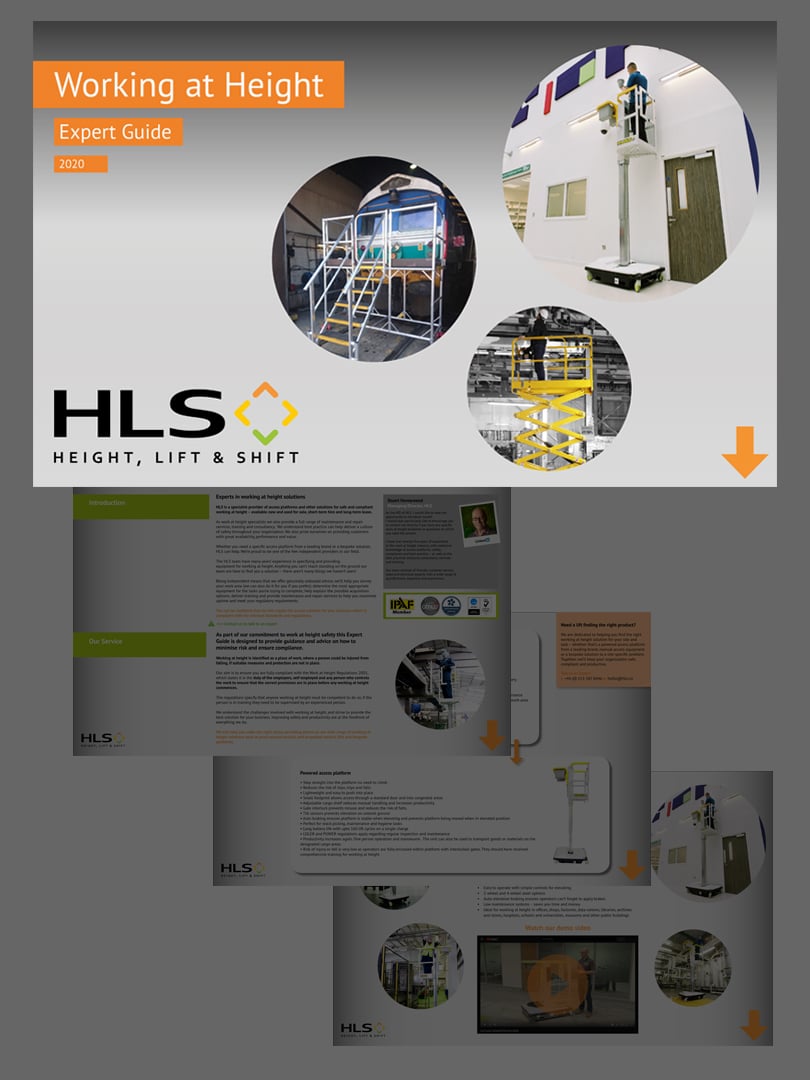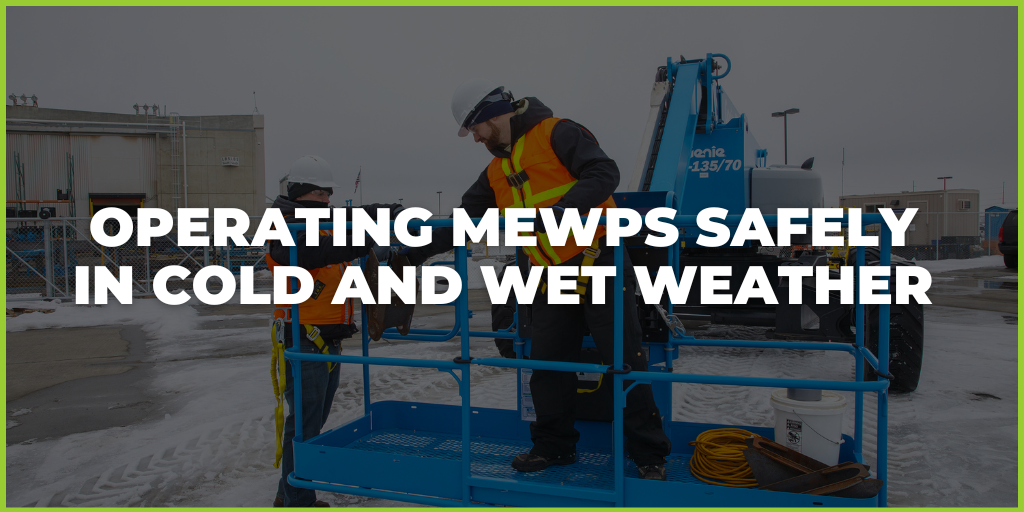Pallet trucks are some of the most common pieces of equipment in warehouses, factories, and distribution centers. Their simple design makes them easy to use, but that does not mean safety can be overlooked. Used properly, pallet trucks can help reduce strain injuries, speed up operations, and keep goods moving smoothly.
This quick guide will show you the right way to use both manual and electric pallet trucks, along with key safety tips and daily checks to keep your team protected.
Understanding pallet trucks
A pallet truck is designed to lift and transport pallets over short distances. There are two main types:
- Manual pallet truck: Operated by pumping a handle to raise the forks off the floor and manoeuvring it by hand.
- Electric pallet truck: Powered by a battery, with motorised drive and lift systems to reduce operator strain.
Risks of incorrect pallet truck handling
Improper use of pallet trucks can lead to:
- Musculoskeletal injuries from poor handling or overexertion.
- Foot injuries if a loaded pallet truck rolls onto shoes.
- Collisions with obstacles, shelving, or other workers.
- Tipping accidents if loads are unstable or trucks are overloaded.
Safe operation protects staff, prevents downtime, and ensures compliance with workplace regulations.
Step-by-step: How to use a pallet truck safely
- Risk assessment before operation
Before touching the pallet truck, pause and assess the risks:
- Environment: Check for obstacles, uneven floors, spillages, or slopes that could affect control.
- Load: Evaluate the load you intend to move. Consider its size, weight, and stability. Never overload! Ensure the load is securely stacked, and the pallet is not damaged.
- Operator proficiency: Ensure the operator is trained and aware of safety protocols.
- Pre-operational checks
Once you have assessed the risks, carry out a thorough inspection:
- Visual inspection: Look for any visible damage or wear, especially on the wheels, forks, and handle. Ensure all parts are in good working condition.
- Hydraulic pump test: Check the truck's hydraulic system by fully raising the forks. This will help you identify any potential issues with the lifting mechanism.
- Lubrication: Ensure that all moving parts are well-lubricated to prevent friction and maintain smooth operation.
- Brakes: Test brakes (if fitted) for proper function.
- Load capacity: Verify the truck’s load capacity and avoid exceeding the recommended limit for safe operation.
- Handle operation: Ensure the handle operates smoothly, without any jerking or resistance
- Emergency features: Confirm that quick-lowering functions or safety releases work correctly.
- Position and inserting the pallet truck
Proper positioning and inserting of the pallet truck under the load are crucial for safe operation.
- Begin by aligning the forks with the pallet openings. Ensure the truck is positioned evenly, and the forks are fully inserted under the pallet to maintain a balanced load and prevent tipping during lifting and transport.
- Firmly grip the handle with both hands and steadily push the truck forward, guiding the forks into the pallet gaps.
- Raise the pallet
Once the forks are correctly positioned, use the handle to pump the forks upwards. Stop once the pallet is clear of the floor. It is essential to maintain a balanced load to prevent tipping.
- Transport the load
Push the truck in front of you, maintaining a clear view of the path. Keep a steady pace, as sudden movements can destabilise the load and increase the risk of accidents. Ensure the route is clear of obstructions, trucks, or pedestrians.
It is advisable to walk to one side of the hand pallet truck, never in front of it, and avoid standing on the inside of a turn.
- Lower the pallet
Once you have reached your location, slowly lower the forks by moving the lever up and pumping it, always monitoring the load to ensure it is stable.
After lowering the pallet, move the control lever back into the neutral position and carefully remove the forks from beneath the pallet.
- Park safely
Finally, find a secure location to store the pallet truck when not in use. Lower the forks completely and ensure the truck is parked in a designated area, away from walkways and operating areas.
Conclusion
Pallet trucks may be simple in design, but safe operation requires awareness, preparation, and the right technique.
This step-by-step guide offers a useful overview of pallet truck operation, but it is not a replacement for proper operator training. To comply with safety regulations and protect your team, every operator must complete professional pallet truck training.
👉 We provide comprehensive pallet truck training courses designed to give your staff the skills and confidence to use both manual and electric pallet trucks safely and efficiently. Contact us today to learn more.




